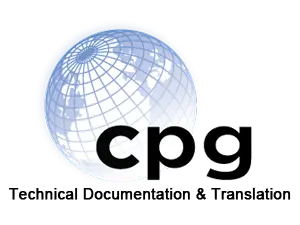
Local Terminology: Why It Matters
Local terminology is essential for companies expanding into global markets. It ensures key terms are translated and adapted consistently across all languages. Whether you are translating manuals, apps, or websites, consistent terminology builds trust and improves usability.
Done poorly, inconsistent translations can confuse users, damage credibility, and even lead to legal risks.
What Is Local Terminology
Local terminology means adapting specific terms, phrases, and labels for each language market. It involves translating product names, interface labels, marketing phrases, and technical terminology—while preserving context and intent.
It is a precise part of the language translation process that focuses on clarity and accuracy, not just words.
Businesses that want full control over their messaging across languages should also consider terminology localization. This process ensures every key term is contextually and culturally correct.
Where Local Terminology Is Used
-
Software interfaces
-
Technical documents
-
Product manuals
-
Help centers
-
Websites
-
Mobile apps
-
Instructional content
Each platform requires consistency across touchpoints to deliver a smooth user experience.
Why Consistency Matters
When terms are translated differently across documents or platforms, users become confused. This inconsistency can affect support calls, compliance, and product satisfaction. In regulated industries, it may even pose a legal issue.
Consistent terminology reduces misunderstandings and boosts user confidence.
Key Benefits of Local Terminology
-
Improves translation quality
-
Reduces support costs
-
Strengthens brand identity
-
Speeds up content updates
-
Supports long-term growth
How Local Terminology Supports Website Translation
In the context of website translation, local terminology plays a vital role. It ensures all translated web content—from navigation menus to product descriptions—remains clear and consistent.
Web users expect native-level language. Even small inconsistencies can damage trust or reduce conversions.
When to Prioritize Local Terminology
| Scenario | Reason to Adapt Local Terminology |
|---|---|
| Launching a product globally | Ensures consistent branding and instructions |
| Expanding to new regions | Adapts language to regional culture and usage |
| Updating technical documents | Maintains accuracy across multiple languages |
| Translating user interfaces | Keeps commands and labels intuitive and precise |
| Producing multilingual content | Avoids confusion and translation errors |
Local Terminology vs Language Translation
While language translation refers to the full process of converting content into a new language, local terminology zooms in on key terms. This includes frequently repeated words, industry-specific language, and brand phrases.
Both processes work together. Language translation provides the structure. Local terminology ensures precision and consistency. For deeper term-specific control, terminology localization strengthens accuracy across all markets.
How to Build an Effective Local Terminology Strategy
Create a Glossary
List frequently used terms. Define them clearly. Include context and preferred usage.
Translate the Glossary
Have the glossary translated and reviewed by professional linguists and native speakers.
Use Translation Memory Tools
Leverage tools that store past translations and enforce consistency in real time.
Collaborate with Subject Matter Experts
Involve engineers, product managers, and content owners to verify terminology.
Update Frequently
As your products evolve, so should your glossary. Update terms regularly and inform all teams.
Industries That Depend on Local Terminology
| Industry | Impact of Terminology Management |
|---|---|
| Software | Accurate button labels, menus, and error messages |
| Healthcare | Precise terminology for compliance and safety |
| Automotive | Consistent naming in parts lists and repair manuals |
| Finance | Legal accuracy and clarity in multilingual contracts |
| E learning | Clear, localized educational content |
Terminology matters in every industry—but especially where technical or legal clarity is essential.
Challenges in Managing Local Terminology
-
Source content is unclear or inconsistent
-
Glossaries are outdated or missing
-
Regional language differences
-
Fast release cycles and limited time
-
Poor communication between teams
To overcome these, use centralized tools, trained linguists, and experienced project managers.
Best Practices for Success
-
Maintain a central terminology database
-
Involve localization early in product planning
-
Train all translators and reviewers on glossary use
-
Audit translated content regularly
-
Align branding and tone across all regions
Conclusion
Local terminology is a core part of successful international communication. It supports language translation, strengthens brand consistency, and improves user satisfaction.
If your business is reaching global customers or expanding its digital content, it is essential to prioritize terminology strategy. Partner with professionals who understand the importance of clear, accurate, and localized language.
To learn more about managing terms across regions and platforms, explore our terminology localization and language translation services. We help you communicate confidently in every language.
Back To News
 800-541-8270
800-541-8270